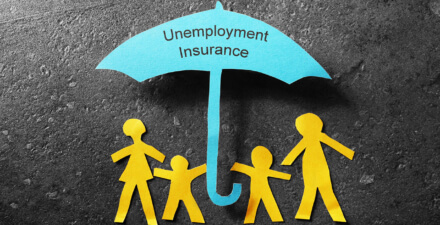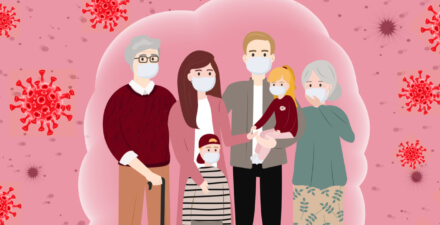Brad DeLong: Worthy reads on equitable growth, March 28-April 4, 2020
Worthy reads from Equitable Growth:
- The U.S. jobs market is going to get much worse. Read Kate Bahn and Carmen Sanchez-Cuming, “First jobs day report since the onset of the coronavirus recession exposes a U.S. Labor market in crisis,” in which they write: “The first Jobs Day report to capture … the coronavirus recession … after decades of rising economic inequality, the decline in the power of unions, and the erosion of the safety net, [means that] U.S. workers are going to be particularly unprepared for this sharp and sudden economic downturn … Today’s report contains labor market data collected during the week ending March 14, before any city or state had ordered the closure of nonessential businesses to slow the spread of the new coronavirus. Yet, by the second week of March, many restaurants, theaters, stores, and hotels had experienced a drop in demand or closed their doors voluntarily, leading to layoffs and reduced shifts for many service workers.”
- Lisa Cook says an immediate move to mobile payments for delivering federal emergency relief to as many people as can accept them would save an enormous amount of distress and heartache in the next month. Read here “Getting money urgently to low-wage U.S. workers,” in which she writes: “Too little of this federal emergency relief money may well get into these consumers’ hands too late. Most people and small businesses have bills due at the end of the month. They need cash immediately. Direct payments will eventually reach most small businesses and families, but getting these funds to them could take several weeks or perhaps much longer. The most vulnerable who do not file taxes and do not receive benefits, such as Social Security, will be the hardest to reach. Mobile money could be the answer. The federal government should learn from the decades-long experience with mobile money in developing countries and more recently in the United States. Mobile phone networks sent all Americans with a cell phone an emergency text alert this past October. They could get them money today, especially the most vulnerable … Ninety-six percent of American adults have cell phones, and 81 percent have a smartphone that could receive and make mobile payments. Thirty percent of smartphone users made mobile payments in 2019 … Mobile payments are faster than traditional payments and offer a good way to send money to the 16 percent of Americans who are underbanked. Smartphone penetration is high among workers most likely to be missed by traditional payment mechanisms—people who have changed addresses and low-wage earners. Ninety-eight percent of adults ages 18 to 29 have smartphones, compared to 81 percent of adults overall. Nearly three-quarters of those earning less than $30,000 have smartphones. The share of African Americans (80 percent) and Hispanics (79 percent) who own smartphones is comparable to the total, but there are larger shares of blacks (23 percent) and Hispanics (25 percent) who use smartphones rather than broadband at home compared to whites (12 percent), according to the Pew Research Center.”
- I believe the consequences for those who would have been getting jobs in the next six months are going to be significantly worse than the consequences for those who try to enter the labor market in 2009. Liz Hipple channels Jesse Rothstein on what those consequences were. Read Liz Hipple, “The long-term consequences of recessions for U.S. workers,” in which she writes: “What does the evidence from the Great Recession of 2007–2009 say about what an extended recession could mean for working people over the long term, especially young workers?… Jesse Rothstein finds that workers who happen to be entering the labor market when there’s a recession have both permanently lower employment rates and lower earnings long after the recession has ended. These effects for recent entrants are even worse than for other members of the U.S. labor force who have been in it longer, as Rothstein explains in a column about the paper: “Workers from these cohorts saw their annual employment rates drop by 2 percentage points to 4 percentage points per year, relative to older workers in the same labor market. Those who were established in the workforce by the beginning of the recession—those who graduated college in 2005 and earlier—essentially returned to prerecession levels of employment by 2014. But those who entered after 2005 have not; their employment rates remain depressed even as the overall market has recovered.” Unfortunately, these effects are not temporary. Rothstein estimates that the permanent effects, or scarring, of the Great Recession on young workers will result in those individuals earning 2 percent less through the early years of their careers and will reduce their employment throughout the course of their career by about one week. While these amounts might sound small for one individual, aggregated across an entire generation, they represent a large loss of earnings and employment.”
Worthy reads not from Equitable Growth:
- This looks about right to me. But the unemployment rate is going to go significantly higher than 15 percent, I think. Read Justin Wolfers, “The Unemployment Rate Is Probably Around 13 Percent,” in which he writes: “The jobless rate today is almost certainly higher than at any point since the Great Depression. We think it’s around 13 percent and rising at a speed unmatched in American history … The Labor Department reported on Thursday that around nine million people had filed for unemployment insurance over the past two weeks … This suggests there are around 8.5 million more people on unemployment benefits today than there were two weeks ago … In addition, independent contractors, including many gig economy workers, most likely lost their jobs but did not qualify for benefits … raise my estimate of the number of job losers to 10 million from 8.5 million … Some people have tried to claim benefits but are not yet counted officially because of processing delays. This might add a further million to our estimate, bringing it to 11 million … The Bureau of Labor Statistics reports that in a typical month, nearly six million workers are hired, a rate of 1.5 million per week. Again, it’s hard to know how much that has fallen, but if the hiring rate fell by a fifth over the past three weeks, that would mean that roughly one million fewer people found work than might otherwise be expected to. At this point, our calculations show 16 million more people without work, for an unemployment rate of 13 percent … The rise in unemployment over the past few weeks has exceeded the rise during the entire year and a half of the last recession. Looking ahead, if job losses continue at the same rate as in recent weeks, the unemployment rate will rise by nearly half a percentage point per day. To give some context, over our recent decade-long recovery, the unemployment rate has fallen roughly that much per year.”



